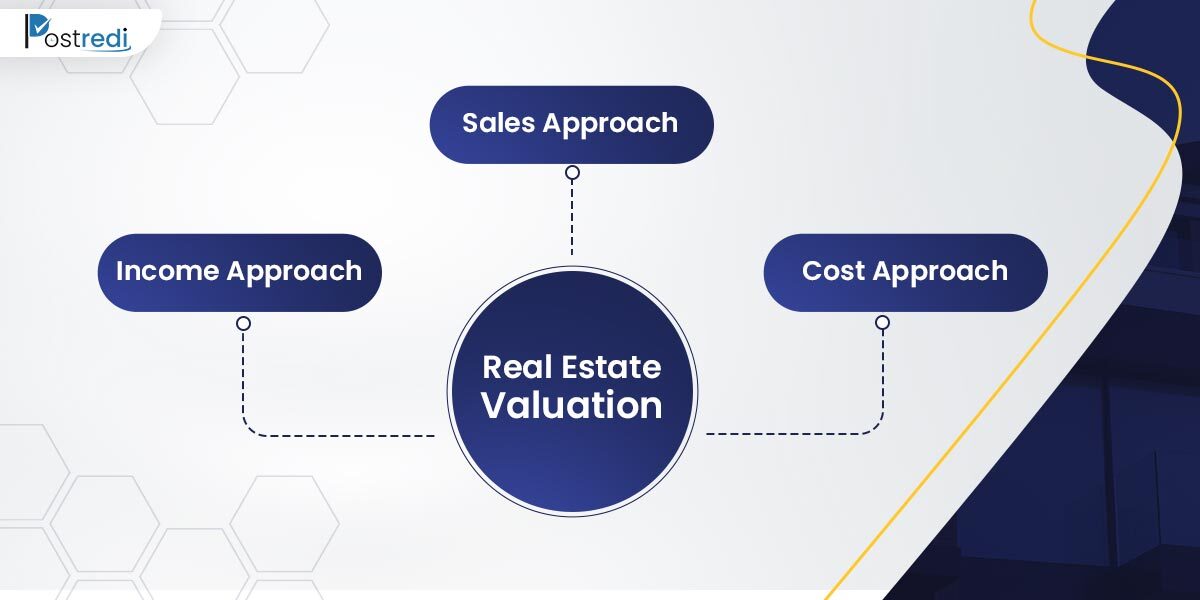When most realtors think about real estate investments, the first thing that comes to their mind is property valuation. Buying and selling a property is not easy as the market value of property shifts continuously. They don’t have a fixed price tag attached to them. Therefore, a precise property valuation will help you analyze the current market value of your real estate investment. You can then make a well-informed decision about selling or buying the property.
However, property valuation is not easy, so investors often work with appraisers to get an accurate assessment. Let’s look at some common methods that are used by investors to estimate their real estate value.
What is Real Estate Property Valuation?
Property valuation is a process through which a real estate buyer or seller can determine the fair market value of their property. This fair market value refers to the theoretical payment that an informed buyer would be willing to pay to an informed seller for a property after considering the demand for similar housing.
It is different from the property’s “price” which is what the buyer will pay and there is some subjectivity attached to it like the needs of the seller and buyer. For example, consider that a buyer wants to sell their property right away. In this case, the property’s price would be far below its fair market value.
Different Methods Used to Value Property
Three main methods are used to estimate a property’s theoretical value – sales comparison, cost approach, and the income approach. However, a commercial property valuation also has a subjective component attached to it.

Method 1: Sales Comparison Approach
The most common approach to property valuation is the sale comparison approach whereby you analyze the value of the real estate by utilizing market sale price data. Realtors compare the listing in question with other similar properties, also referred to as comparable or “comp” properties. The defining characteristics of your property should be similar to comps. These features include:
- Property’s location and its desirability
- Square footage
- Year built and condition
- The number of rooms
- Zoning regulations
- Date of sale
- Proximity to your property, and so on.
However, it is rather difficult to find comps that exactly match your subject property. Most appraisers just look for a nearby property that was sold most recently and has the most similar defining features. So, there is not much precision attached to this method. Anyhow a skilled realtor give you the best idea about property you just have to find the best person It can be inferred already that you can’t get the same valuation with all three methods. The sales comparison approach is best suitable for single-family homes because typically there will be many comps available for analysis.
Method 2: Cost Approach
In this approach, you determine the value of a property by estimating the cost of land and construction/replacement costs minus the functional and physical depreciation.
Cost Approach = Property Land Cost + Construction costs – Functional and Physical Depreciation.
The cost approach method is used to estimate the value of properties that are either unique or not sold easily. Because you cannot easily locate appropriate comps for such properties. For example, converted churches, castles, government buildings, schools, etc.
Related Post – House Inspection Checklist
The first step is to estimate the depreciation value of your home. The following factors are to be considered for this estimation:
Physical Deterioration – structure’s condition, old mechanical systems and fixtures, foundational damages, roof condition, and other important structural features.
Functional Obsolescence – outdated features of your property’s structure and design that cannot be easily upgraded. For example, having a two-bedroom design in an area that can fit three modern bedrooms with bathrooms.
Economic Obsolescence – external factors that affect the depreciation value of a property. The owner has very little control over these factors. For example, your property’s location.
Once you have analyzed this value, here is how the cost approach will proceed:
1. Estimation of your land’s current value by using comparable sales.
2. Determine the construction cost along with essential improvements.
3. Estimate the depreciation cost by considering the above-mentioned factors like physical deterioration, functional obsolescence, and economic obsolescence.
4. Subtract this accrued depreciation value from construction costs.
5. Finally, add the depreciated value (from the above step) to the current land value and you will have the exact valuation of your property.
Note: All above property evaluation steps can Maximize your profit before selling/buying a property
Method 3: The Income Capitalization Approach
This method of property valuation is used to estimate the market value of certain properties. These include income-producing properties like commercial and apartment buildings or sometimes multi-family residential properties. So we can infer that the market value of these income-producing buildings majorly relies on their income potential. There are two ways to deal with the income capitalization approach:
- Direct Capitalization
- Gross Income Multiplier
Direct Capitalization
The value of commercial properties and apartment buildings is estimated by using a direct capitalization approach. The first step in this approach is to calculate the property’s NOI (Net Operating Income) from income and expense statements.
1. For this, the appraiser first estimates the gross potential income of the building (GPI) based on the market rates.
2. After that, deduct the vacancy and other credit costs to arrive at the effective gross income (EGI).
3. Figure out the potential property expenses. There are two types of expenses:
- Variable – changes every month, like maintenance and repair costs, management fees, etc.
- Fixed – static, like loan and mortgage payments.
4. Deduct the above-calculated expenses from the effective gross income and you will get the net operating income (NOI).
5. Calculate the local capitalization (cap) rate by dividing the NOI of other similar properties/comps by their sale price.
6. Apply this cap rate to your property by dividing the NOI by the cap rate. And now, you have an estimated value of your property. For example, consider that your property has an NOI of $12,222 and the cap rate is 8%. Simply divide $12,222 by 0.08 and you will reach the value of $152,775.
Gross Income Multiplier
The gross income multiplier approach is used to estimate the value of small multi-family and single-family rental properties. You can calculate GIM by simply dividing your property’s sale price by its gross rental income.
Why should you value a real estate property?
If you are a first-time buyer or seller, it is important to understand the importance of property valuation. Instead of accepting the sale price mentioned by the owner, you can calculate the actual value of that property. Some investors add exorbitant prices under the reasoning of extra features or quality construction. So by following any of the above methods, you can save yourself from paying a higher cost.
Additionally, by determining the value of a property, you can also get an idea of its ongoing costs like taxes and property insurance.
FAQs
Which factors are considered in an appraisal?
- Assessment of the exterior condition of a property.
- Assessment of the interior condition and room-by-room inspection.
- Appraise the property’s amenities like a built-in bar or a finished basement.
- Check for any health code and safety violations.
Who is an appraiser?
A real estate appraiser is a professional having all the skills needed to be a realtor who provides detailed value assessments of commercial and residential properties. After conducting their analysis, appraisers give you an accurate estimation of your property’s market value.
What will be the cost of a home appraisal?
Ideally, a home appraisal of a single-family property will cost somewhere between $300 and $450. But the cost can vary depending upon different factors like property size, repair expenses, number of comps, and seasonal conditions.
Wrap Up
When it comes to residential property valuation, you can use any of the three methods to get a rough estimation. However, in the case of commercial properties, it is better to either use the Income Approach or a combination of all three methods. By assessing the market value of your property, you will get a solid understanding of a property’s actual worth.





















